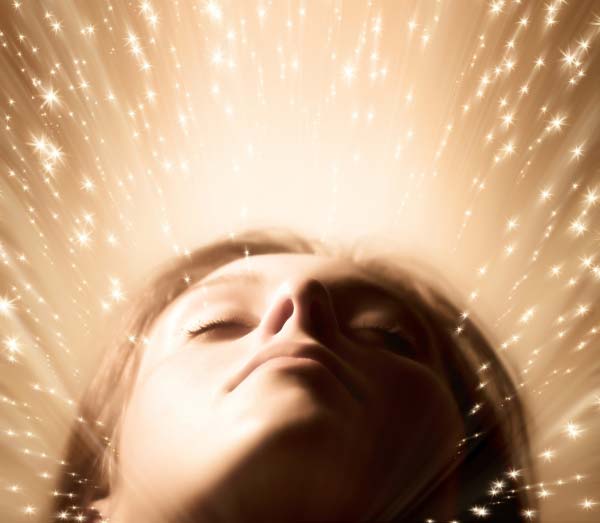Why We Dream: Real Reasons Revealed

BOSTON – The slumbering mind might not seem like an apt tool for any critical thinking, but humans can actually solve problems while asleep, researchers say. Not only that, but one purpose for dreaming itself may be to help us find solutions to puzzles that plague us during waking hours.
Dreams are highly visual and often illogical in nature, which makes them ripe for the type of "out-of-the-box" thinking that some problem-solving requires, said Deirdre Barrett, a psychologist at Harvard University.
Barrett's theory on dreaming, which she discussed at the Association for Psychological Science meeting here last month, boils down to this: Dreaming is really just thinking, but in a slightly different state from when our eyes are open. [Why we dream is just one mystery of the mind.]
"Whatever the state we're put in, we're still working on the same problems," Barrett said. Although dreams might have initially evolved for a different purpose, they likely have been refined over time so they can serve double-duty: help the brain reboot itself and problem-solve.
Dreams and evolution
A theory to explain dreams, or any human behavior for that matter, needs to take into account evolution, Barrett said. But many early theories of dreaming either didn't address evolution at all, or downright contradicted it, she said.
For instance, Sigmund Freud proposed dreams exist to fulfill our wishes. But such gratification in an imaginary world would do little to help us adapt our instincts to the physical world, which is one key point of evolution, Barrett said.
Sign up for the Live Science daily newsletter now
Get the world’s most fascinating discoveries delivered straight to your inbox.
Others have proposed dreams are more of a side effect of the sleep cycle. Dreams usually occur during Rapid Eye Movement, or REM, sleep. This stage is thought to serve several functions: to rest a part of the brain (since some areas are active while others aren't) and to replenish brain chemicals, such as neurotransmitters.
This has led some to say that dreams happen simply because REM sleep happens, Barrett said. The psychologist Steven Pinker once likened dreams to computer screen savers, saying that it perhaps "doesn't really matter what the content is as long as certain parts of the brain are active."
However, Barrett disagrees. "My opinion is that, evolution just isn't wasteful, that when things evolve for one purpose, that generally they don't continue throughout time to have only that purpose, but anything else that may be useful about them gets refined," she said in a telephone interview with LiveScience prior to the convention.
She also noted that REM sleep has been around for quite some time, since mammals evolved some 220 million years ago. "The longer something has existed during evolutionary history, the likelier it is to have other functions overlaid on it," she said at the convention.
Problem-solving
Barrett has studied problem-solving in dreams for more than 10 years, and documented many examples of the phenomenon.
In one experiment, Barrett had college students pick a homework problem to try to solve in a dream. The problems weren't rocket science; they were fairly easy questions that the student simply hadn't gotten around to solving yet. Students focused on the problem each night before they went to bed. At the end of a week, about half the students had dreamed about the problem and about a quarter had a dream that contained the answer, Barrett said.
So at least in the cases where problems are relatively easy, some people can solve them in their sleep.
Barrett has also extensively reviewed scientific and historical literature, looking for examples of problems solved in dreams.
She found examples of almost every type of problem being solved in a dream, from the mathematical to the artistic. But many were related to problems that required individuals to visualize something in his or her mind, such as an inventor picturing a new device.
The other major category of problems solved in dreams included "ones where the conventional wisdom is just wrong about how to approach the problem," Barrett said.
Dreams might have evolved to be particularly good at allowing us to work out puzzles that fall into those two categories, she said.
"I think that dreams and REM sleep have probably further evolved to be useful for really as many of the things that our thinking is useful for," Barrett said. "It's just extra thinking time, so potentially any problem can get solved during it, but it's thinking time in the state that's very visual and looser in associations, so we've evolved to use it especially to work on those kinds of problems."
- Top 10 Mysteries of the Mind
- Top 10 Spooky Sleep Disorders
- Video Gamers Can Control Dreams, Study Suggests

Rachael is a Live Science contributor, and was a former channel editor and senior writer for Live Science between 2010 and 2022. She has a master's degree in journalism from New York University's Science, Health and Environmental Reporting Program. She also holds a B.S. in molecular biology and an M.S. in biology from the University of California, San Diego. Her work has appeared in Scienceline, The Washington Post and Scientific American.










